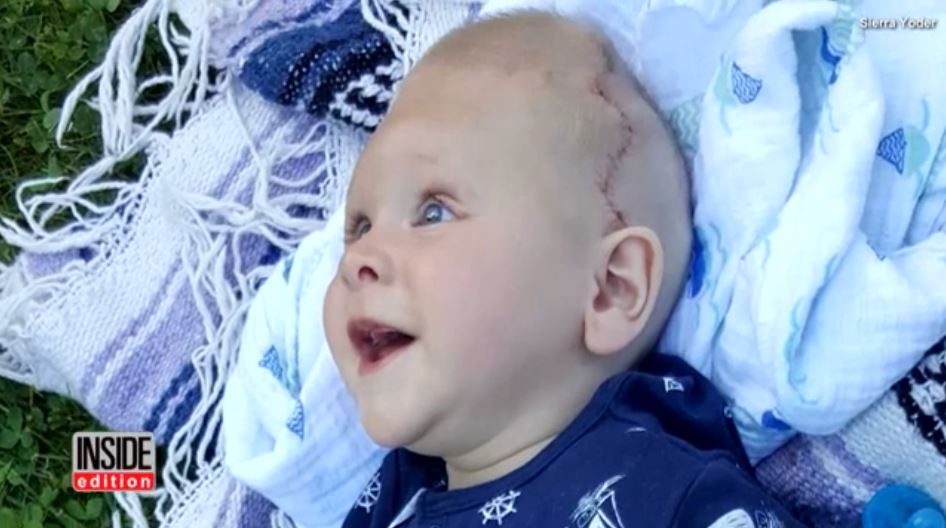No one expected this Ohio baby to survive.
Sierra Yoder, mom of baby Bentley, told InsideEdition.com that she first realized something was horribly wrong in her pregnancy at 22 weeks, during a routine ultrasound at her OB/GYN.
"I had seen the shadow go across his face immediately. He looked like he was going to be in tears," Yoder said.
She was advised to get more testing done, and when it was discovered her unborn baby had an encephalocele, a rare condition that would cause his brain to grow over his unformed skull, doctors suggested that Yoder get an abortion.
She and her husband were in disbelief over the news, especially since the couple had taken every precaution during pregnancy, and had no family history of illness.
"At the beginning, we had said we didn't want him to suffer, we'll just end the pregnancy," she said. "The night before the procedure, I couldn't do it."
They decided proceed with the birth of little Bentley, knowing that he probably wouldn't survive for very long after birth.
"We went in there pretty optimistic. We wanted to make sure he was comfortable long enough to know love, and to be held," she said. "We didn't want to take aggressive measures to keep him alive."
Her husband, Dustin Yodel, said in a Boston Children's Hospital video that doctors warned them: "He won't talk, he won't move, you won't know when he's hungry, he'll just be a shell."
But Bentley was born kicking and screaming. That night, Yoder said she stayed away 42 hours after delivering her baby boy. "I was afraid we were going to lose him," she said.
For the next 4 weeks, Yoder and her husband spent every moment with their newborn like it was their last, until one day, a neurologist told them, "He's not going anywhere."
The family relaxed after noticing Bentley was not sufferingthrough seizures and acted more-or-less like an average newborn baby, despite the heavy bump on his head.
Yoder compared the part of his brain that hung out of his skull to a cyst or a belly. She said despite it being extremely heavy, it was soft, but could grow hard if he was crying, or the weather was poor.
The bump protruded from the back of his head, instead of from the top, meaning the family would constantly have to protect Bentley from lying on it and hurting his brain. During nap time and diaper changes, his mom said they would make sure he was supported by a pillow at all times.
But baby Bentley continued to face complications due to his condition. He developed respiratory illnesses frequently, and the bump on his head was rapidly growing and thinning out the skin that contained it.
To fix it, surgeons originally thought they could cut out the bump, but they soon realized that because the bump contained vital brain structures, his surgery became more complicated.
Doctors needed to come up with a new plan to push the brain back into the skull, and used 3-D printed models to plan and practice the procedure.
After making a few small cuts into his cranium and draining almost a pound of fluid out of his brain, Bentley was beginning his road to recovery.
Now, 4 weeks after the surgery, Yodel said her younger son is quickly catching up to other 7-month-old boys, despite being told that he would die in the womb.
"Every day, he's doing more and more things that's been gradually improving," she said. "He's a lot more alert. He's understanding his surroundings. His movements have been more purposeful, he's smiling when we talk to him."
Before the surgery, doctors speculated that he wouldn't have eyesight in either eye, but Bentley has since even began using both to see.
"The pediatrician has full confidence he will get to where he needs to be," Yoder told InsideEdition.com.


